Remarkable mass storage devices
IBM 2321 Data Cell
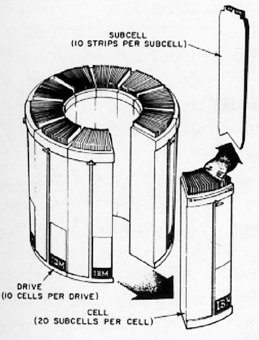
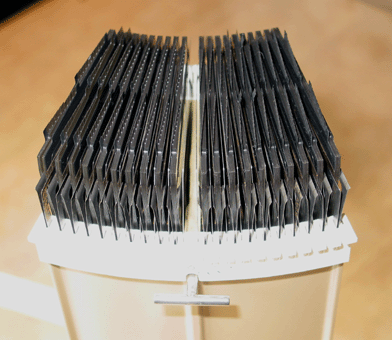
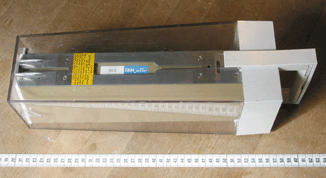
The drive accomodated 10 removable and interchangeable data cells like the one shown above. Each data cell contained 200 2.25" by 13" magnetic strips. After selection a strip was taken from the cell and wrapped around a drum. Average access times: selection of a strip from a cell 400 ms; rotational delay once a strip is on the drum 25 ms; selecting a track 95 milliseconds. Reportedly the device worked not very reliably. It was also supported by Control Data under the name of '2321 Strip File'.
IBM 3850 Mass Storage System
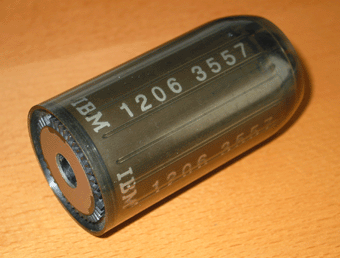
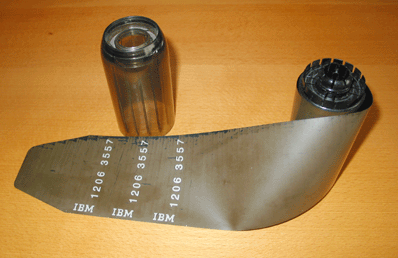
Like modern video tape, the 3850 tapes were read and written by helical scanning. The 3850 was designed to store images of the Model 3330 Disk File. Two cartridges would contain the image of a 3336 disk pack. The 3850 MSS was introduced in 1974.
